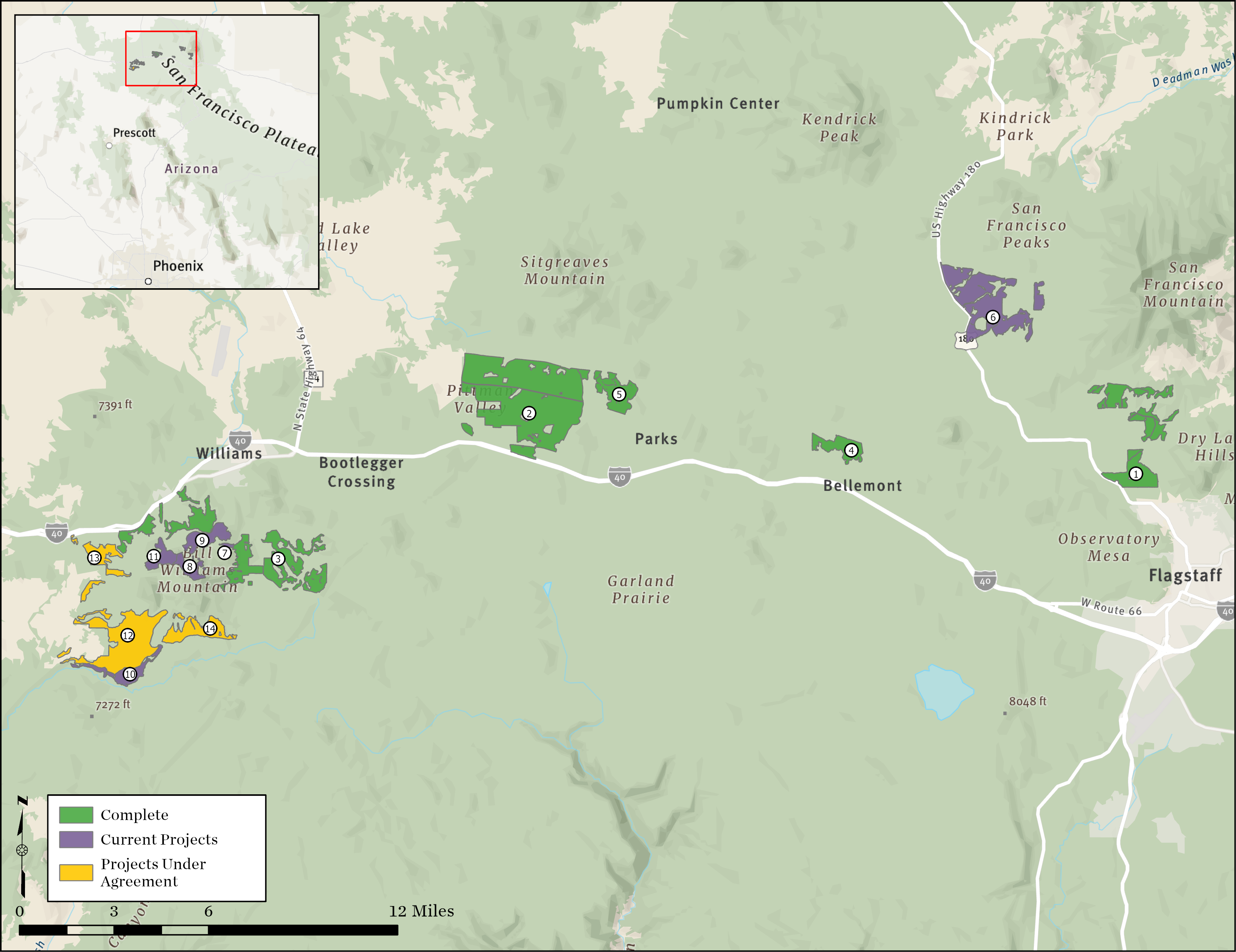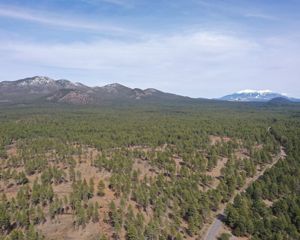Restoring Arizona Forests: A Natural Approach
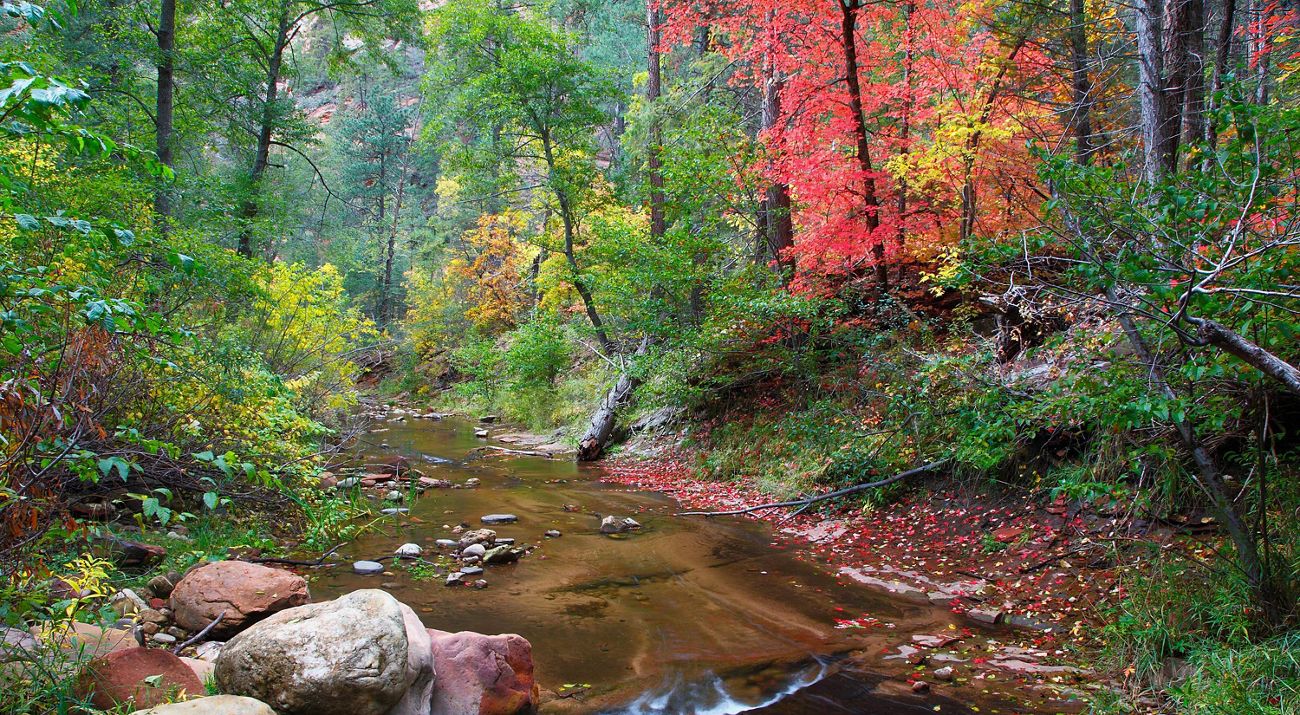
New Forest Study Briefs
- In 2023, the industry supporting forest restoration activities in the Four Forest Restoration Initiative (4FRI) landscape in northern Arizona brought an impressive $216M of economic impact to the region. Read more
- Science data drives innovation for streamlining forest restoration project layout practices on the Walker Hill Demonstration project. Learn about these remarkable results, demonstrating that digital based layout methods not only provide comparable outcomes to conventional Leave Tree Marking (paint), but are also 5x faster and 10x less expensive. Read more
Northern Arizona’s lush grasslands and towering pines form a rare, 3-million-acre ponderosa pine forest. For over 20 years, we’ve worked to safeguard this natural treasure from wildfires, protect communities and sequester carbon. Now, we’re taking our efforts to new heights.

This graphic depicts the benefits of tree-based restoration. It notes that the economic benefits of restoring degraded land stand at an estimated $84 billion a year. Some of the other benefits include improving water quality, providing sustainable timber, fiber, and fuel, improving soil health, creating rural jobs, improving biodiversity, improving air quality, helping to mitigate climate change, and providing foods and forest products.
Forests: Our Lifeline
Forests are vital to everyone, no matter where you live. They play a crucial role in water filtration, ensuring clean water flows into our rivers and lakes. By storing carbon and helping to regulate temperature and precipitation, forests help mitigate climate change, making our planet more livable. They also improve air quality by absorbing pollutants and producing oxygen. Beyond these, forests support a wide variety of life, providing homes for countless species of plants and animals while also offering recreational spaces for outdoor activities like hiking, camping and birdwatching.
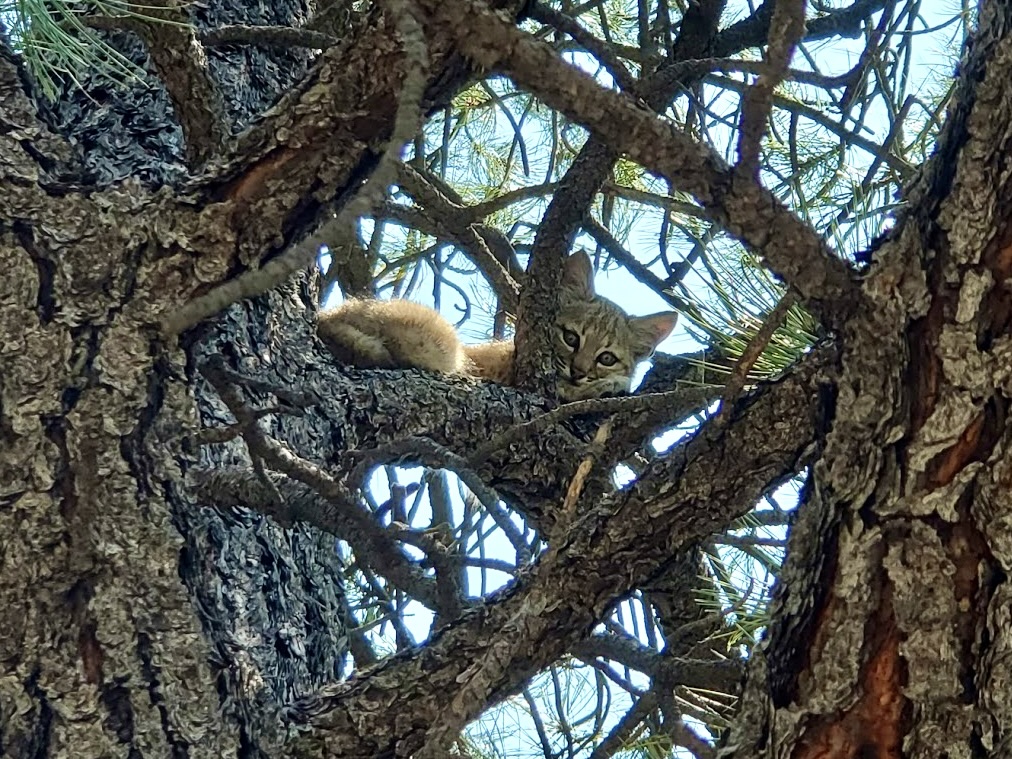
Restoring an acre of forest not only brings these benefits back but also ensures the longevity and health of our forests for future generations.
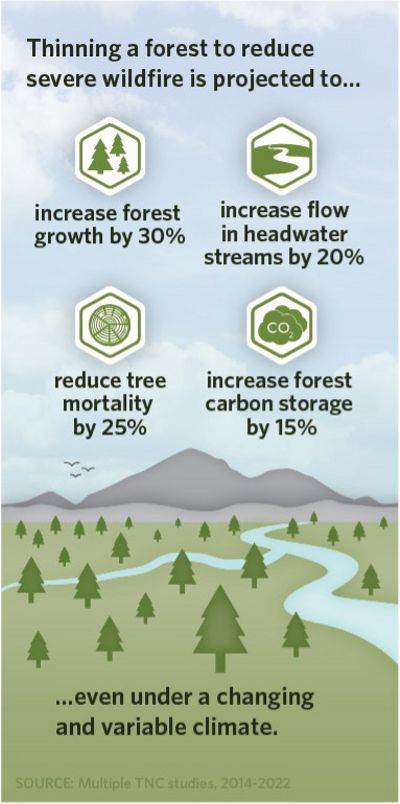
Thinning a forest to reduce severe wildfire is projected to increase forest growth by 30 percent, increase flow in headwater streams by 20 percent, reduce tree mortality by 25 percent, and increase forest carbon storage by 15 percent, even under a changing and variable climate.
Comprehensive Forest Restoration
Forest restoration is not a one-size-fits-all solution. It requires diverse and adaptive strategies aimed at identifying and prioritizing the areas where we can make the greatest impact.
Protecting Ecosystem Services
We actively mitigate threats like wildfires, climate change and drought through methods such as forest thinning and prescribed burns.
Partnering for Greater Impact
By collaborating with partners like the U.S. Forest Service on agreements through our 20-year Master Stewardship Agreement, we increase the pace, scale and quality of restoration.
Embracing Innovation and Technology
Driven by science and data, we develop and implement modernization strategies through process improvement and by leveraging technologies that provide operational efficiencies in forest restoration, including:
- Virtual Boundaries and Tablet Marking
- LiDAR Derived Volume Estimates
- Digital Timber Sales Manager (DTSM)
- Woody Biomass Utilization Solutions
- Electronic Tracking and Ticketing of Merchantable Material
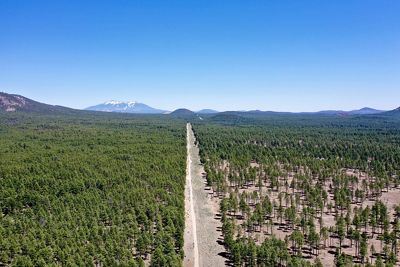
Partners
Our work relies on strong partnerships: government agencies, community leaders, Tribal Nations, affiliated nonprofits and more. We bring a strong science background to help inform best practices and results, additional capacity, as well as develop and implement innovations to increase pace, scale, and quality of comprehensive forest restoration.
-
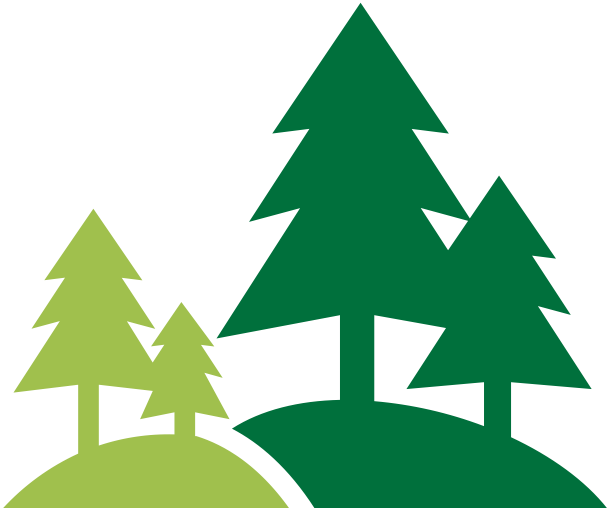
U.S. Forest Service (USFS)
The primary owner of forested lands in the Southwest region of the United States; TNC is an important implementation partner, bringing added capacity, science, innovation and additional funding to the common objective of restoring forest landscapes.
-
Tribal Nations
Our tribal nations have long been stewards of our forests. In recent years, we have worked together to build on that legacy. Working with both the Hopi and Navajo Nations we have found ways to deploy low-diameter wood for fuel.
-

Local Governments
Our local governmental partners, such as Coconino County Flood Control District and The City of Phoenix, bring additional expertise and funding to our efforts, which further contributes to watershed protection and post-wildfire flooding mitigation.
-
Other affiliated partners
Many other NGOs add collaborative value to forest restoration in the Southwest. We share data and key learnings to accelerate our collective efforts of reducing catastrophic wildfire risk and protecting water, biodiversity and communities.
Places We Protect
Explore our project areas in Northern Arizona.
Chimney Springs
1,620 acres completed in 2019 on the Coconino National Forest
Parks West
4,985 acres completed in 2023 on the Kaibab National Forest
Clover/Dog
2,498 acres completed in 2022 on the Kaibab National Forest
Walker Hill Demo
473 acres completed 2023
New innovative practices are focused on streamlining project layout, a critical bottleneck in the restoration treatment pipeline. Walker Hill Demonstration Project provides data-driven information on shifting workflows from manual, paint-based tree designation to more scalable and cost-effective digital approaches. The project was conducted at an operational-scale study site on the Coconino National Forest in northern Arizona and was the first rigorous scientific study of its kind to assess these designation methods.
Sawmill Springs
688 acres completed in 2024 on the Kaibab National Forest
Hoch
The Hoch Restoration Project encompasses 2,045 acres aimed at restoring the historical forest structure and natural functions while reducing the risk of catastrophic wildfire. This project is within The Upper Rio De Flag Watershed of the San Francisco Peaks, designated by the Coconino County Flood Control District and Coconino National Forest as a top priority site for forest restoration. Work begins July 2025.
Bill Williams Mountain (BWM) Restoration Project
This project encompasses 15,200 acres within The Kaibab National Forest. Bill Williams Mountain has been identified as a priority landscape for restoration and fire protection within Coconino County. A multi-million-dollar communication (public safety) site is at the top of the mountain, and BWM is the apex of six watersheds that service the City of Williams and the Phoenix metropolitan area. Recent modeling studies indicate that in conjunction with the aforementioned impacts, post wildfire flooding damages to this area could have significant negative effects on national transportation corridors of BNSF Railroad and I-40 and reach as far as the Grand Canyon.
Bill Williams Steep Slope Project Area: 922 acres identified. Steep slope is defined as a slope greater than 35%. Due to difficult terrain and years of fire exclusion, tree density and hazardous fuels have built up to dangerous levels on much of the mountain. This fuel accumulation now requires strategic intervention before beneficial fire can be safely reintroduced. Current steep slope treatments focus on thinning and removing dead and downed material through helicopter yarding, which is significantly more expensive than ground-based operations, costing upwards of 25x more. Our team is looking at innovative ways to reduce these costs.
Bill Williams Steep Slope Project Area: 3,500 acres identified. Off-slope is defined as a slope less than 35%, on flatter ground similar to the landscapes of our other projects and enabling the use of typical harvesting equipment.
Our Forest Goals
Our strategies center on innovations and technologies to create efficiencies for forest thinning, impacting state and federal policy, and science that highlights multiple benefits for people and nature.
-
Reduce Risk
Protect vulnerable communities by identifying “opportunity hot spots," or areas to prioritize helps reduce the risk of severe wildfires, and expand restored forested lands to enhance wildfire resilience. Learn more
Get the printable fact sheet
What you can do:
Join The Nature Conservancy in our critically important effort to restore Arizona forests and secure our water future. With your help, we can revive the important services our forests provide to people and nature.
